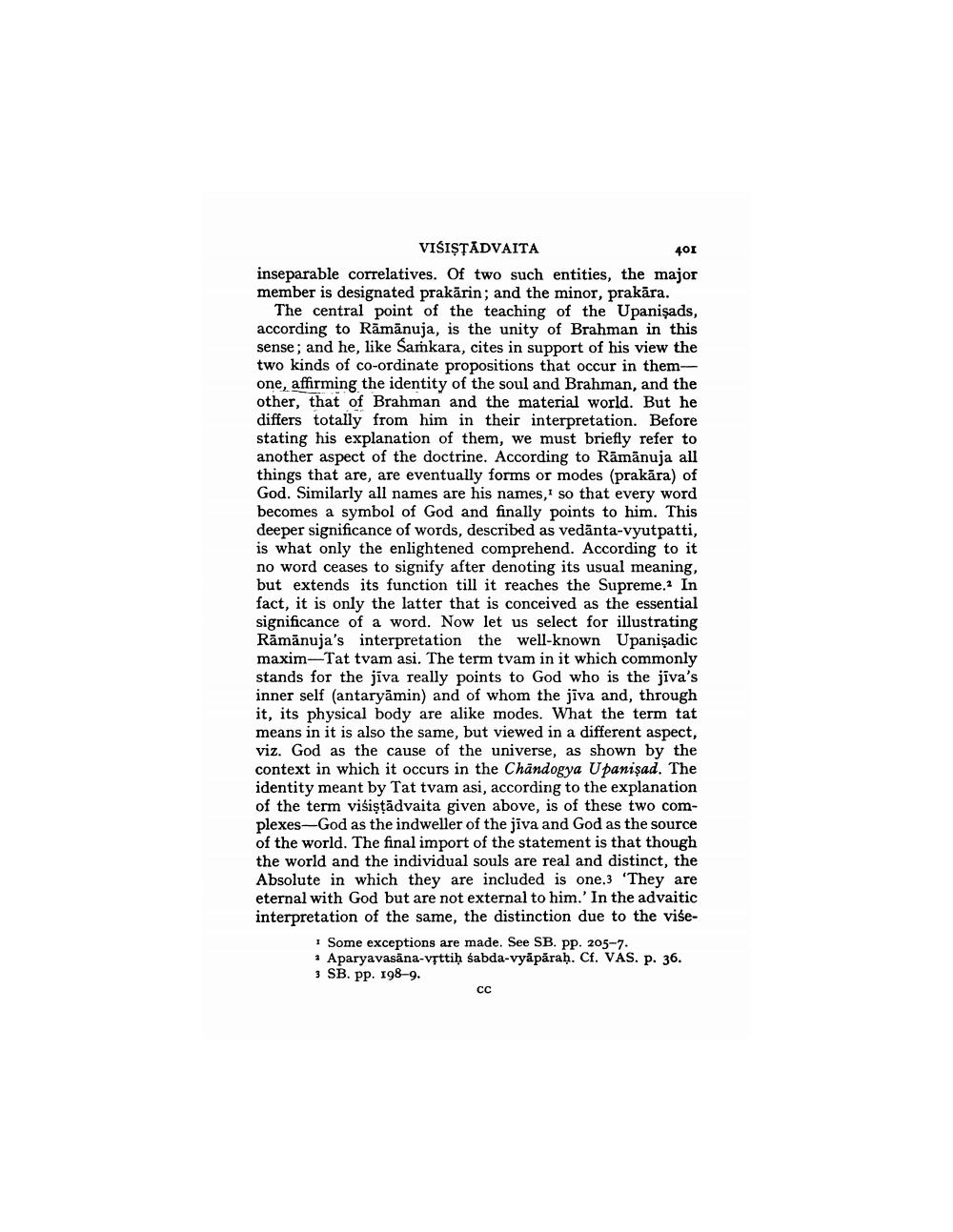________________
VIŠIŞTĀDVAITA
401 inseparable correlatives. Of two such entities, the major member is designated prakārin; and the minor, prakāra.
The central point of the teaching of the Upanişads, according to Rāmānuja, is the unity of Brahman in this sense; and he, like Sarkara, cites in support of his view the two kinds of co-ordinate propositions that occur in themone, affirming the identity of the soul and Brahman, and the other, that of Brahman and the material world. But he differs totally from him in their interpretation. Before stating his explanation of them, we must briefly refer to another aspect of the doctrine. According to Rämänuja all things that are, are eventually forms or modes (prakāra) of God. Similarly all names are his names, so that every word becomes a symbol of God and finally points to him. This deeper significance of words, described as vedānta-vyutpatti, is what only the enlightened comprehend. According to it no word ceases to signify after denoting its usual meaning, but extends its function till it reaches the Supreme.2 In fact, it is only the latter that is conceived as the essential significance of a word. Now let us select for illustrating Rāmānuja's interpretation the well-known Upanişadic maxim-Tat tvam asi. The term tvam in it which commonly stands for the jiva really points to God who is the jiva's inner self (antaryāmin) and of whom the jiva and, through it, its physical body are alike modes. What the term tat means in it is also the same, but viewed in a different aspect, viz. God as the cause of the universe, as shown by the context in which it occurs in the Chandogya Upanişad. The identity meant by Tat tvam asi, according to the explanation of the term višiştādvaita given above, is of these two complexes-God as the indweller of the jiva and God as the source of the world. The final import of the statement is that though the world and the individual souls are real and distinct, the Absolute in which they are included is one.3 'They are eternal with God but are not external to him.' In the advaitic interpretation of the same, the distinction due to the više
Some exceptions are made. See SB. Pp. 205-7. * Aparyavasāna-vȚttiḥ sabda-vyāpāraḥ. Cf. VAS. P. 36. 3 SB. Pp. 198-9.
CC




